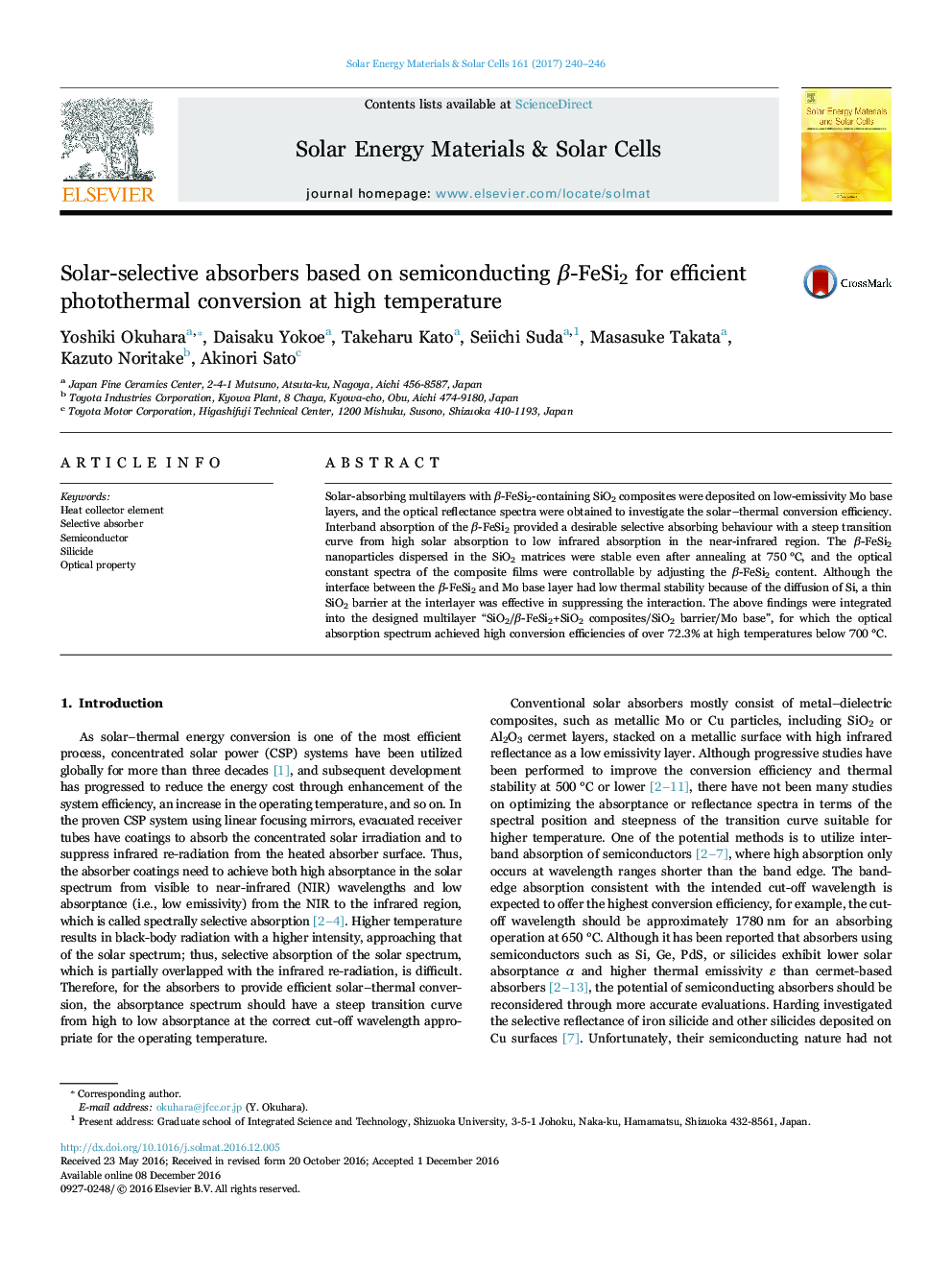| Article ID | Journal | Published Year | Pages | File Type |
|---|---|---|---|---|
| 6457019 | Solar Energy Materials and Solar Cells | 2017 | 7 Pages |
â¢Efficient solar-thermal conversion by semiconducting β-FeSi2 at high temperature.â¢The high efficiency originates from a steep cut-off at the band-edge absorption.â¢Optical constants of β-FeSi2 nanoparticles+SiO2 composites are controllable.â¢Thermally stable silicides in SiO2 matrices suitable for high-temperature operation.â¢Diffusion of Si from silicides to low-emissivity metals should be prevented.
Solar-absorbing multilayers with β-FeSi2-containing SiO2 composites were deposited on low-emissivity Mo base layers, and the optical reflectance spectra were obtained to investigate the solar-thermal conversion efficiency. Interband absorption of the β-FeSi2 provided a desirable selective absorbing behaviour with a steep transition curve from high solar absorption to low infrared absorption in the near-infrared region. The β-FeSi2 nanoparticles dispersed in the SiO2 matrices were stable even after annealing at 750 °C, and the optical constant spectra of the composite films were controllable by adjusting the β-FeSi2 content. Although the interface between the β-FeSi2 and Mo base layer had low thermal stability because of the diffusion of Si, a thin SiO2 barrier at the interlayer was effective in suppressing the interaction. The above findings were integrated into the designed multilayer “SiO2/β-FeSi2+SiO2 composites/SiO2 barrier/Mo base”, for which the optical absorption spectrum achieved high conversion efficiencies of over 72.3% at high temperatures below 700 °C.
Graphical abstractDownload high-res image (187KB)Download full-size image
